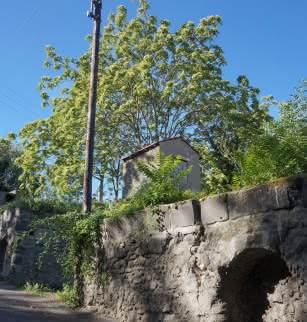The cellars of Châteaugay

Châteaugay bears traces of a vine growing business that was once significant in the region: caves fashioned outside the village were perfectly suited to storing wine.
The caves, grouped together in districts, away from residences, are characteristic of several winemaking villages including Aubière, Pérignat-lès-Sarliève or Romagnat. They date back to the 18th and 19th centuries, contemporaries of the expansion and then the pinnacle of the Auvergne wine making business, until the phylloxera plague of 1889. In Châteaugay, vines have long occupied the well-exposed hillsides at the edge of the Limagne plain.
The caves are located in the Chalard district. They are hollowed out of the peperite (lava bound by marly limestone cement). Often located on the hillsides, they are several metres deep. They are vaulted and covered with earth in order to preserve thermal inertia around 10°-12°, a temperature favourable to wine storage. For ventilation, each cave has a ventilation duct with an outlet at the surface of the mound and a door with clerestory. On the pillars of each downstream entrance, notches cut into the stone serve to support a cross-beam for handling barrels using a rope.
The cave districts require winemakers to perform additional handling. After pressing in the vats in the house, the wine had to be transported to the caves where it was placed in casks (barrels of 200 to 300 hectolitres). The very severe winters in the 17th and 18th centuries, the little ice age, caused wine to freeze in the vats where it was stored pending shipment via the river Allier in the spring. These caves, at constant temperature, were designed to protect the production that the regional economy depended on.
Additional information
Visible from the street only.
Opening dates and times
All year round, daily.
Prices
- Free access.












